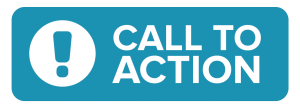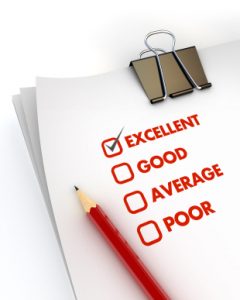So, you finally got your website up and running. You have this great product(s) that you are ready to introduce to the world, but you aren’t getting any traffic. Why? Well, because no one has heard of you ever before…that’s why. So, you start to look into ways that you can increase your brand awareness and you run into Adwords and/or Bing Ads, and decide that this is for you. Great! Welcome to the world of online marketing. Let’s not get ahead of ourselves though; there is a lot to learn first. This article isn’t going to cover the basics Adwords or Bing Ads, but instead I want to skip along and discuss things that some people overlook when they are first dipping their toes into paid search. Specifically, what I want to talk about are Paid Search Landing Pages. Some people refer to them as PPC Landing Pages as well. So let’s get started.
The Purpose of a Landing Page

A landing page’s prime reason of existence is to engage your visitors. By engaging your visitors, you capture their attention and they are intrigued. Generally you are offering a product that they are already interested in, but now you need to capture their attention and help them realize what it is that makes your product different than the thousands of other similar products out there. Once they are intrigued, or curious about your product, they become compelled to learn more about it. If these landing pages are built correctly, they will become your most useful weapon in the paid search war.
Preparation for Building Landing Pages
Now we are ready to start making some landing pages for our products. The first question you may have is how many landing pages do you need? The quick answer here is “as many Ad Groups you have.” However, I’m assuming that you have built out your paid search campaigns properly, so let me go off on a tangent for a moment to discuss proper campaign structure. When building out your campaigns, they should each be relevant to a specific topic. So let’s say that you sell fruit online, and one of the products you offer is “oranges.” “Oranges” will be your first Campaign here. Next will be your Ad Groups. There are many different types of oranges and each one will need its own Ad Group.
We will have an Ad Group for Navels, Tangerines, Tangelos, Blood Oranges, Clementines, Mandarin, Satsuma, Kumquats and more (you get the picture, right?). So, now that you have you Campaign structure down correctly, we can now concentrate back on our landing pages and the number of landing pages that we will want, again, will be the number of Ad Groups that we have in each Campaign. You have 10 Ad Groups; you will want 10 Landing Pages. You have 100 Ad Groups; you will want 100 Landing Pages. This may sound like a daunting task, but if you have a base template set up to start off with all you will need to do is adjust the content on each page to target each product.
Creating a Call to Action (CTA)

Referring back to our definition of a landing page, we know that our main goal here is to gain engagement. The next task is going to be to create a Call to Action (CTA). A CTA is simply a request to the visitor. That request can be to make a purchase (“Buy Now” or “Add To Cart”), call a phone number (“Call Us Now” or “Call Today”) or simply fill out a lead generation form (“Schedule A Demo”, “Download A Whitepaper”, “Schedule An Appointment” or something similar). The important thing here is that any of these Call to Actions need to be in a prominent position. Place them “Above the Fold” in the immediately visible area a visitor sees without having to scroll down your webpage. When doing this, make sure to review you Analytics data and determine what the most used resolution is that people are using to navigate your website, and make sure that your Call to Action is prominently placed to fit above the fold at that resolution.
Increase Your Overall Quality Score

Lastly, when building your landing pages, make sure to keep your focus on the following items to help you increase your overall Quality Score for each keyword you are targeting.
-
- Make sure to use original content. If you simply copy and paste content from a product page on your website you can run into duplicate content issues organically and that’s no fun for anyone. Your visitors are looking for information that they can’t find anywhere else. Remember one of my points listed above. Engage the visitor by letting them know what makes your product different from any other product they can find on the web.
- Segment your content into a understandable hierarchy showing emphasis in your titles and sub headers while utilizing your header tags (H1, H2 and so on)
- DON’T KEYWORD STUFF. Again this will hurt your organically as well, but can also have a noticeable effect on your Quality Score as well. Instead, use relevant keywords to your targeted keywords that people may search for in substitution of you main term for this particular landing page.
Now that we have the building finished, what can we expect? Well, to start, you should be seeing better analytic Key Performance Indicators (KPIs) such as “Time on Site” and “Page Per Visit.” If you engaged your audience, then they are going to want to spend more time on your site and research at the very least. Next, you should start to notice better Cost per Clicks (CPCs). This is a by-product of another thing you can expect, which is better Quality Scores. Better Quality Scores help reduce your individual Cost per Clicks, saving you money. Lastly, we should start seeing better Conversions, Conversion Rates and CPAs. Obviously, with lower Cost per Clicks and more Conversions, our Conversion Rates are going to increase and our Cost per Acquisitions are going to decrease… and that my friends, is why you want to use landing pages for your PPC.
Author: Ed Cehi, Senior SEM Manager

With fourteen years of Internet Marketing experience, Ed Cehi joined That Company as a SEM Account Manager in 2008 after previously working at another high profile Florida Web Design and Marketing Agency located in Ocala, Florida for the six years previous. He started his career in Internet Marketing as a Web Designer after graduating from The International Academy of Design and Technology in Orlando Florida with his degree in Web Design. He soon moved on to Search Engine Optimization and then graduated into Paid Advertising following that. Ed now holds the position of Senior SEM Manager at Th@t Company located in Leesburg Florida, just outside of Orlando. You can find him online in multiple social mediums such as Twitter (@edsaxman) and LinkedIn.































